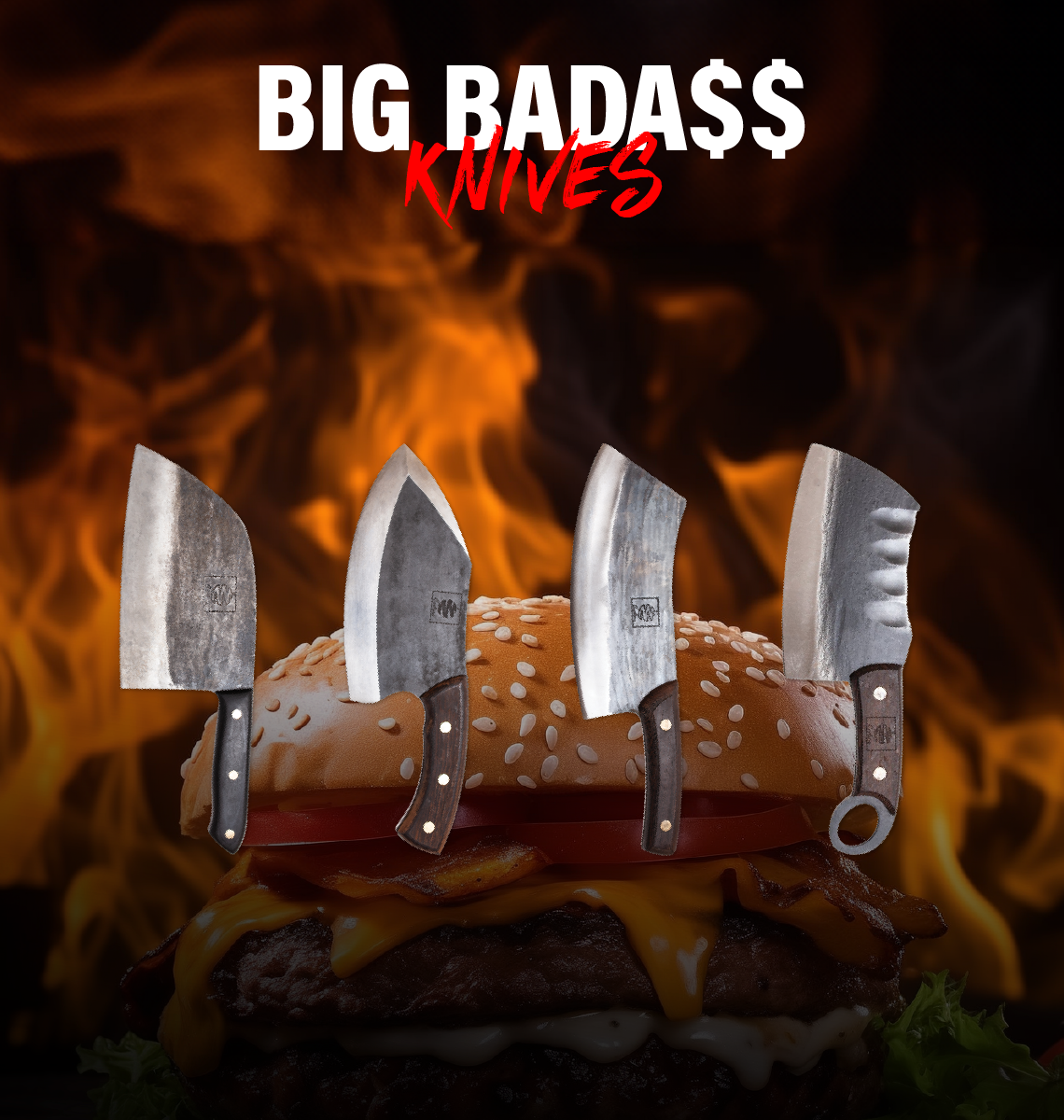How to choose the right Chef’s knife?
Finding the perfect chef’s knife can sometimes be challenging and time-consuming but to have an irreplaceable knife that feels like your right hand is a dream for many. A dream worth investing time and resources.
Now, we are going to cover the most important things that you will need to consider while choosing the right chef’s knife for your kitchen.
But before starting the search, you need to know or decide what type of a knife is best for you. There are dozens of shapes and sizes, therefore you will need to choose the exact style that will fulfil your kitchen’s needs the best. It all depends on the purpose that you are buying it for and what you cut the most. We suggest you buy handmade knives, which are very strong, durable and sharp. Especially, Japanese handmade knives that are conquering the world of professional cooking with a storm.
Choose the type
-
The classic chef’s knife: This is a classically shaped, very sharp knife that can multitask and be the only knife you need.
-
Boning knife: A knife with a narrow, flexible blade that features a tapered tip. This knife is able to separate the meat from the bone without damaging it.
-
Butcher knife: This one is a strong and sharp knife that can butcher boney meat effortlessly.
-
Vegetable knife: The name says it all. A Japanese style knife with tapered, fluted, thin, angled and broad blades to protect your pincers.
-
Fillet knife: It is not a very flexible knife, but does its job perfectly if you are buying the knife for mainly cutting fish.
-
Cleaver knife: this one is mainly meant for quickly cutting through bones, large chunks meat or anything though really.
-
Santoku: This Japanese style sharp and quick knife is like a sword that can slice anything with no effort, which makes it perfect to be a chef’s knife.
The main things to consider while buying:
1. The Blade
The blade is the most important thing to consider when buying a knife and it is the reason why you end up buying a certain knife, so choose wisely.
We are here to tell you that the best blades of the world have been handmade by professional blacksmiths. Some may say that the best material for knives is ceramic yet these types of knives tend to last for a very short time and break easily. If you are interested in more serious and long-lasting knives, then steel is the right way to go, especially, when buying a handmade knife.
In the past few years, handmade knives have become very popular amongst professionals as well as non-professionals and that must say something; People are realizing that quality and longevity go hand in hand with handmade knives.
Sharpness is crucial for a blade, especially long-lasting sharpness. No one wants to buy a knife that gets blunt in a month. Handmade knives are famous for being extremely sharp and durable throughout many years of use. But you should also never underestimate the power of a good knife sharpener.
2. The best materials for a handmade blade:
- High-carbon steel: These types of steel make sturdy blades that keep an edge and won't discolor, and will last for a long time. They may rust but with good care that can be prevented. The sharpness never goes away.
- Damascus steel: Arguably the best steel for knives. It is a strong combination of several types of pure steel which makes the blade extremely strong, sharp and beautifully patterned.
- Stainless steel: This is a more affordable option, which won't rust, but it needs occasional sharpening sessions. That won’t be hard if you have a good knife sharpener at home.
- Titanium: These blades are light and keep a sharp edge, but they're too flexible for cutting into hard or dense foods.
3. The handle
The handle is the second most important part you need to pay attention to for obvious reasons such as balancing out the blade or being comfortable for the hand and so on.
The best material for handles, especially for handmade knives, is natural wood, which can be quite lightweight and comfortable yet balance a heavy steel blade effortlessly. The last thing you want is buying an all-steel knife and struggling to lift it all the time.
Comfort is the most important quality that you need in a handle so try to look for knives that have ergonomically made handles. We guarantee that cutting will become extra comfortable for your hand and you will not have to push the handle hard, which also depends on the sharpness of the blade.
The handle of a knife has to balance the blade perfectly, especially if you are buying a large knife. A good handle shouldn't feel slippery when it is wet and have enough clearance on its underside so you won’t hurt your knuckles while cutting.
A knife with an uncomfortable handle is a knife that you won’t be able to use often, so - what’s the point of buying it?
4. Details to pay attention to:
- Size: The perfect length for a chef’s knife is 8-inch according to the majority of professional chefs. But it is up to you to choose the right length that will be comfortable for you to work with.
- Blade thickness: A thin blade is always better unless you only work with boney meat.
- The spine: It is the top part of the blade, which also has to be thin.
- The edge: A high-quality chef’s knife has to have an extremely sharp edge, which will not get blunt easily.
- The shape: There are many different shapes that operate in different ways, so choose that wisely as well.
In conclusion: The actual first thing that might end your search quicker is buying your chef’s knife online. In this day and age, you can buy anything online. We suggest you checkout Coolina’s collection of excellent quality and mostly handmade steel knives to see the power of shopping online for yourself. Choose the knife that will meet all the needs of your kitchen...






Be the first to comment